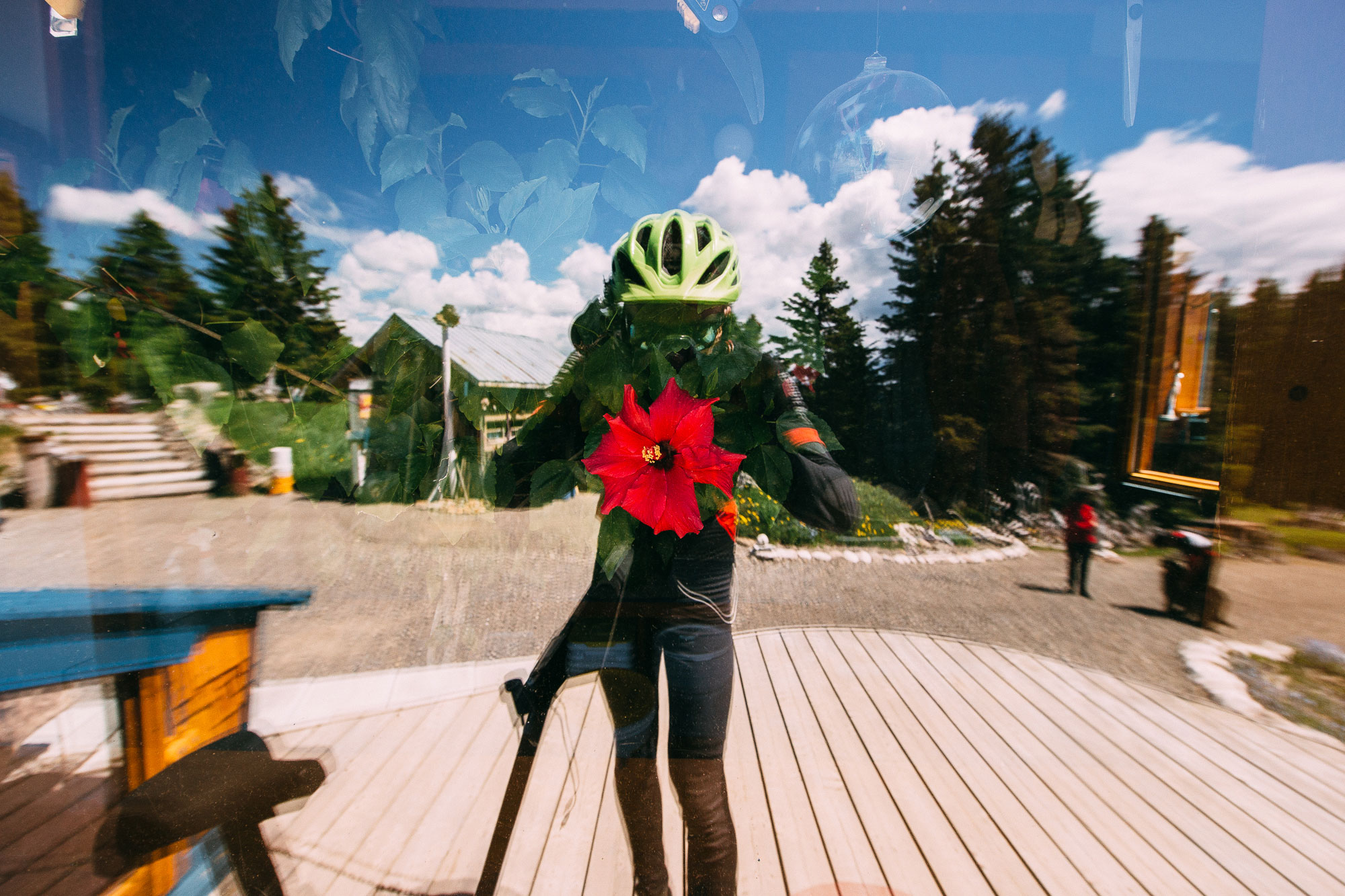The moment I walked into Margot’s studio gallery, my jaw dropped. I had never seen anything like it. Paintings covered the walls, sculptures lined the counters, tools and extra materials were organized in drawers and boxes. The result was a stunning array of artistic creations. It was chaotic and bright, filled with hidden pieces and eye-catching details. My eyes couldn’t move fast enough, or slow enough.
Margot herself seemed a bit amused. She had opened for the summer the day before, making me the first visitor of the year.
“Who made all of this?” I asked in French.
She laughed. “It was me.”
I turned on the audio recorder as I learned more about who she was and what she did. Unfortunately I put it on the counter where she was stacking cards, so there’s a bit of noise in the recording.
“My name is Margot Merette,” she said. “On vit juste en face de Rocher Percé.”
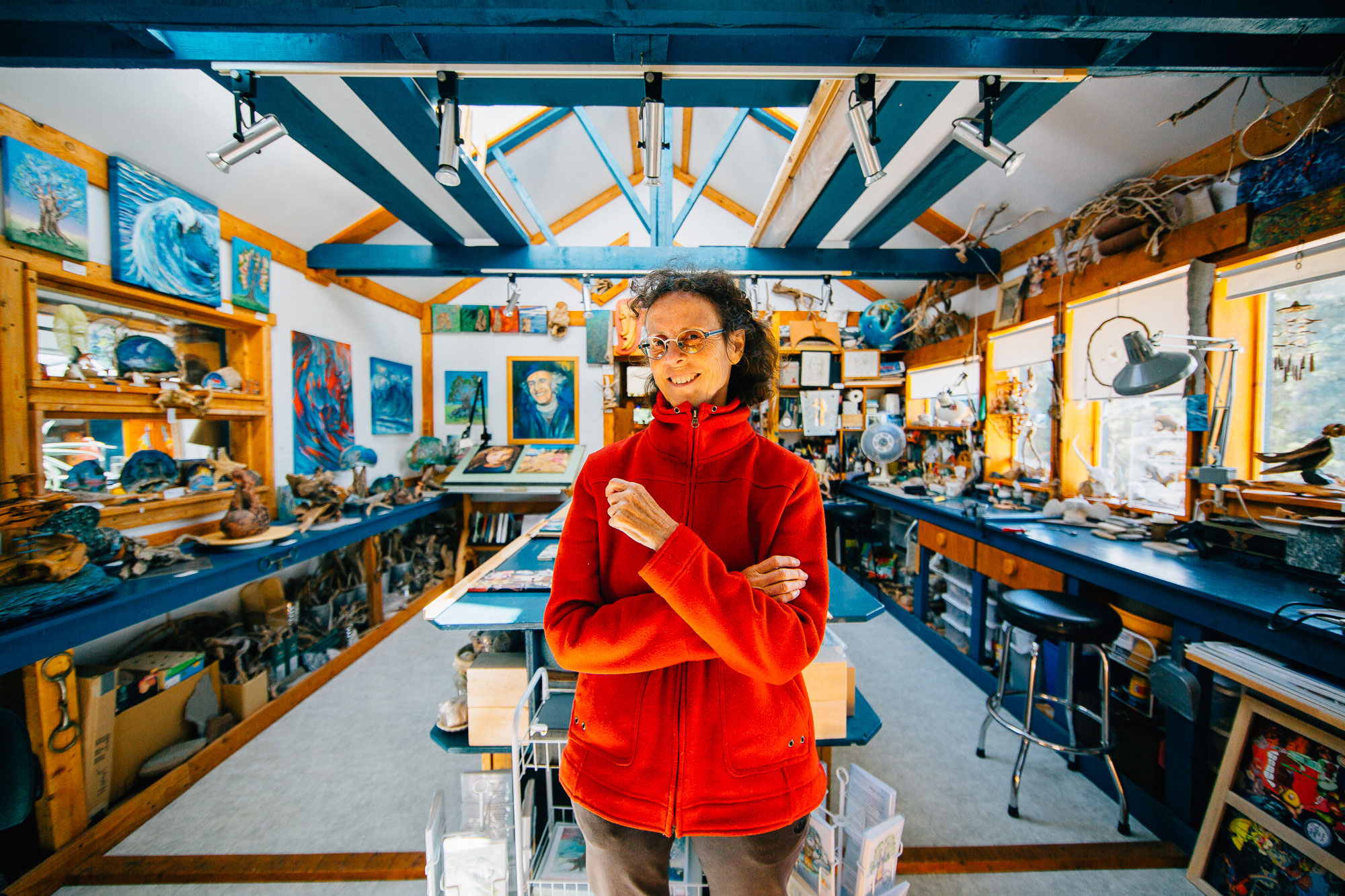

“I fell into art when I was little. I was born with a paintbrush in my hand, I think. I drew a lot when I was young.”
Throughout her childhood and her career as an artist, she always loved trying new things. “I was always like that,” she told me. “Even when I drew, I liked drawing cars as much as I liked drawing portraits, or I would try drawing with a paintbrush or other things instead of a pencil. I always tried all kinds of things.”
“I’m not stable,” she joked, and her laughter alluded to years of unrestrained creativity and wry self-deprecation.
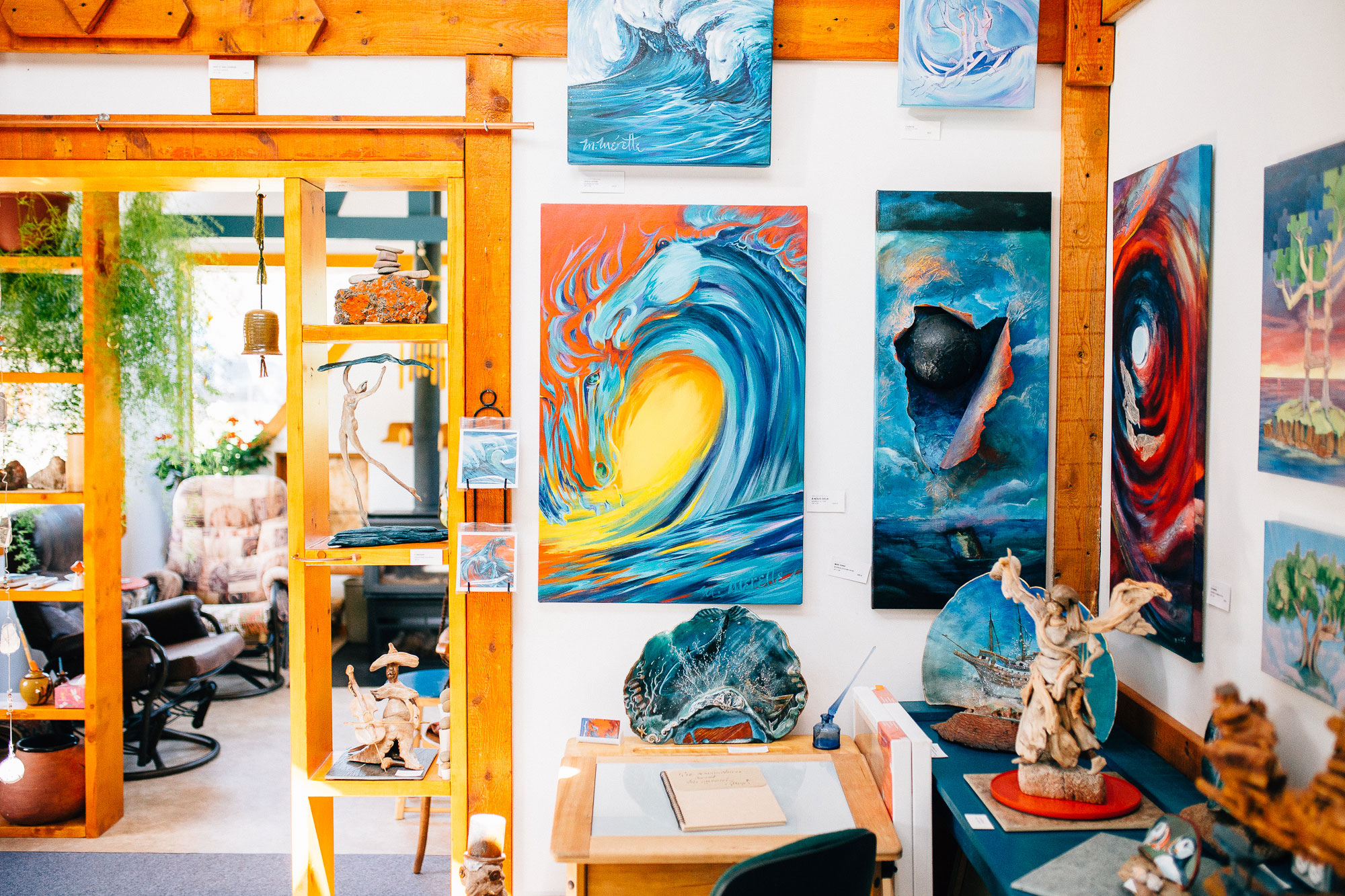
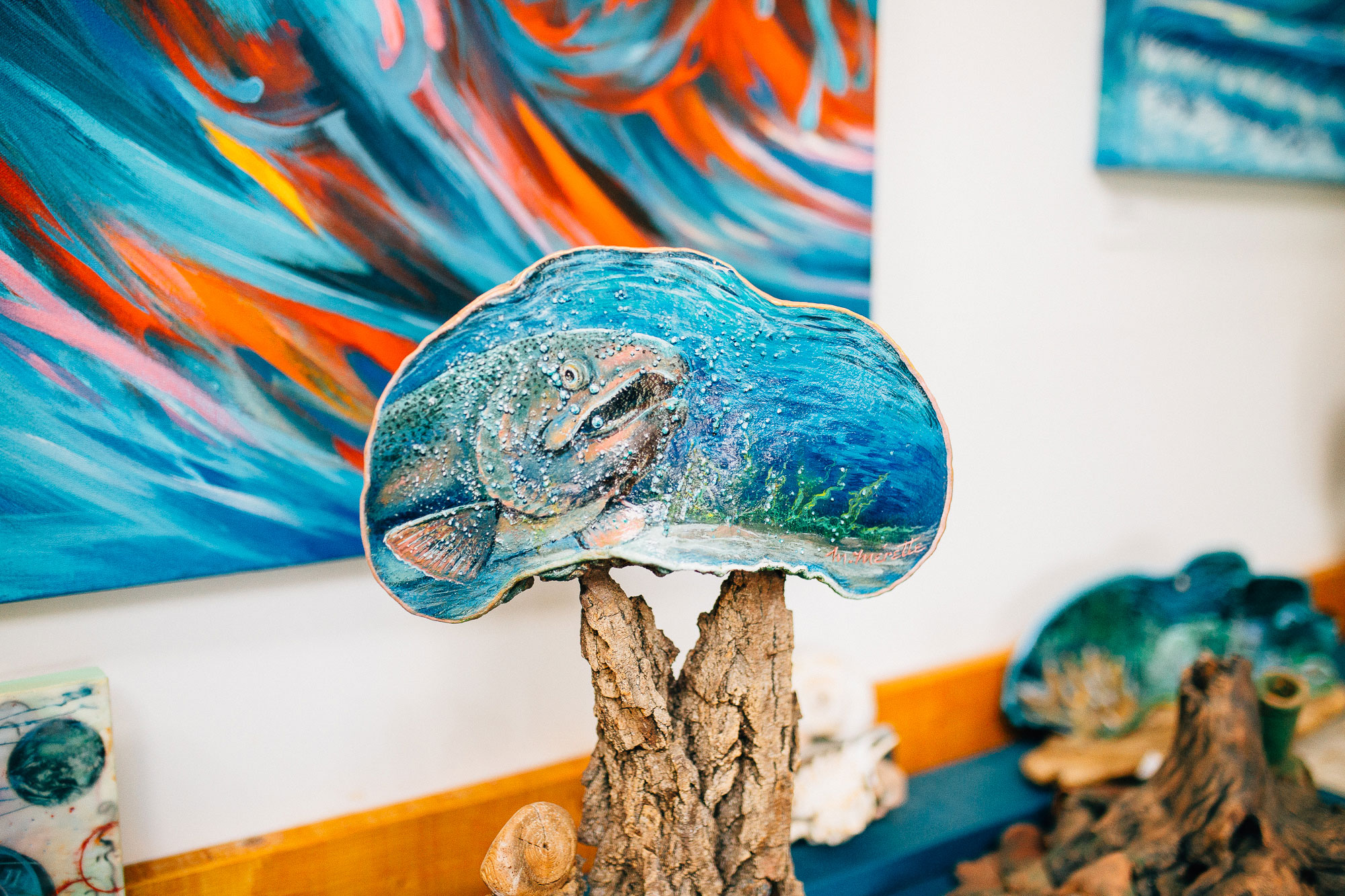
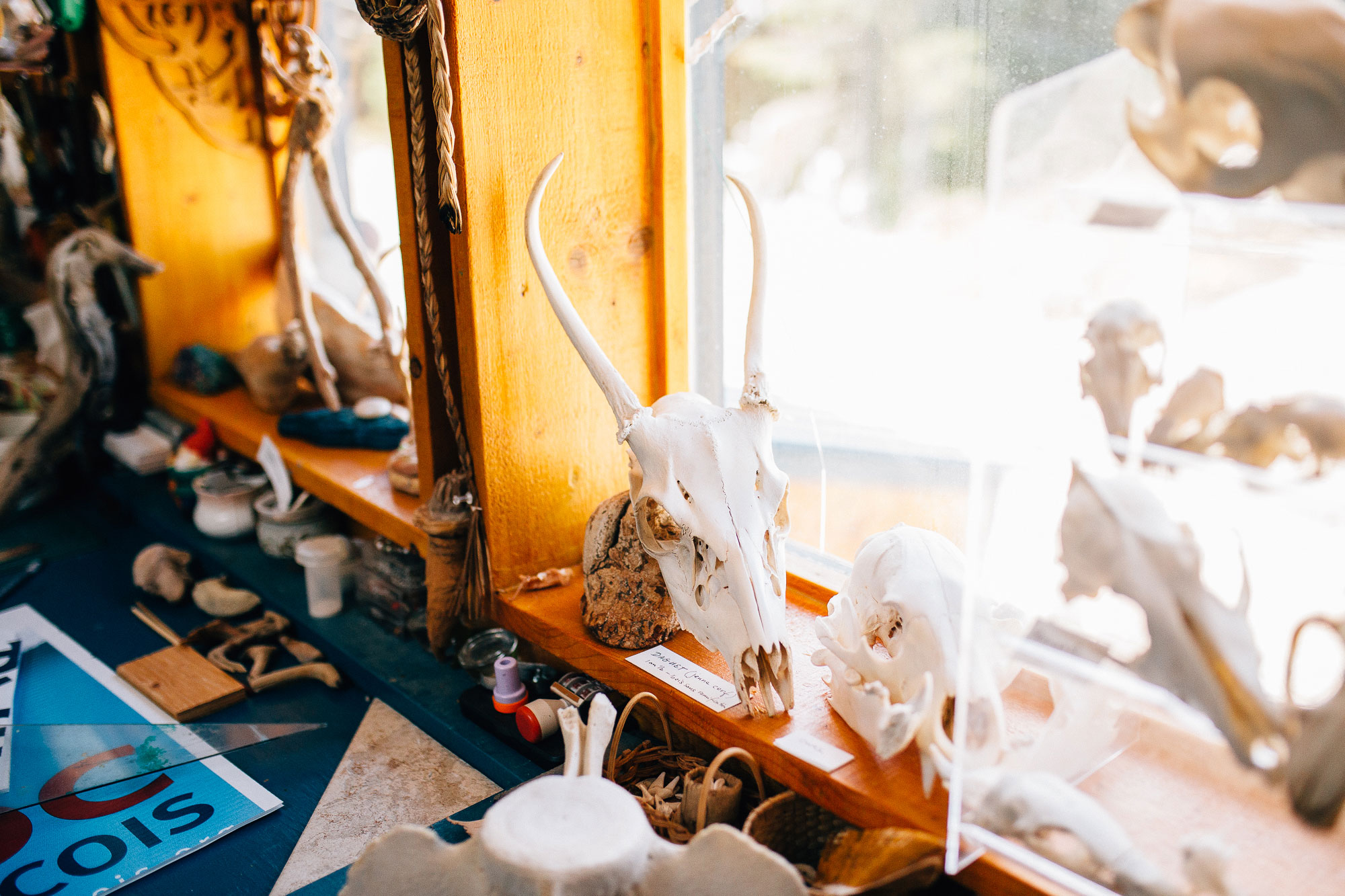
What made her atelier so visually stunning for me was its wide variety of media. There were paintings on canvas, paintings on mushrooms, paintings on rocks. There were portraits, landscapes, colours, textures. There were rough sculptures made of driftwood and vanished sculptures made with sanded hardwood. There were bones, tiles, starfish, shells, beads and stones. She called herself, among it all, a multidisciplinary artist.
That’s why my first question was who had made all of the artwork. Usually a professional artist has a single set of skills and a well-established style. Margot had everything and more.
“I function more by theme,” she explained. “I discipline myself a bit by giving myself a theme, then I tell myself, well I’m going to do things on, for example, trees. I have twenty five pieces with different trees that I painted, after that I switched into waves and I did a series on that. Now I’m more into collage, with the theme of childhood.”
“I have a million ideas in my head. I have no shortage of ideas. Just energy and time.”
It seemed to me that the themes Margot chose weren’t as whimsical as much as they reflected what was going on in her life. The trees and waves, she pointed out, were connected to her home on the coast of the Gulf of St. Lawrence, and many of the pieces of art called forward a human relation to nature. She explained her process of creating art related to childhood. “I find little things that remind me of my childhood, objects and images that speak to me and remind me of the past. That’s part of aging, I think, recalling my youth.”
She said that creating art related to childhood had a good deal of fun with it. “Each theme has had its difficulties,” she said, “mais c’est joie.”
She compared her art to le gang of modern artists and said she didn’t identify with that. “Au lieu que l’art contemporain je dirais l’art qu’on comprend rien. Art that we don’t understand.” Modern art has taken up the market, she explained, “but I don’t make art to sell. I’m in between. I’m not part of the system.”
“I think it’s necessary to create from your heart, first of all. Not to try to necessarily please an audience. Make what you love, and it will spread. People will like it because it’s sincere. […] If you make it just to sell it, just to be known, you won’t really be known because it’s not really you.”
I explained the cross-Canada project to her, and she responded that she wasn’t Canadian.
“Je suis avant tout québécoise.”
“We’re much diminished since René Lévesque. It’s changed. It’s not at all the same as it once was. Independence, I don’t believe in it as much anymore, even if I’d like to. It’s become more of a dream than a reality.”
Another huge part of my visit at Margot’s studio gallery was her jovial and industrious husband, Gerard. I hesitated a long time before deciding to write about him, because Margot’s skills and stories are amazing enough to stand on their own, but she and Gerard had such a strong interdependence I felt that he was worth describing.
When I got there, he was cleaning a fish outside the house. When I left, he was transplanting plants in the garden. “Gerard the Great,” he introduced himself with a hearty laugh. He had energy like a kid and craftsmanship like a veteran; he laughed as much as he talked and I couldn’t imagine him in a bad mood in the slightest. Just being near him made me feel good.
“Artists,” Margot said, “we like des fous, the crazies. But he always gives me energy and lifts my spirits. When I don’t feel like doing anything, he gets me going.”
After talking to Gerard I told her that I understood what she meant. He had so much vigour and zest for life, it was like the sky was blue because he made it that way.
She raised her eyebrows. “Des fous.”
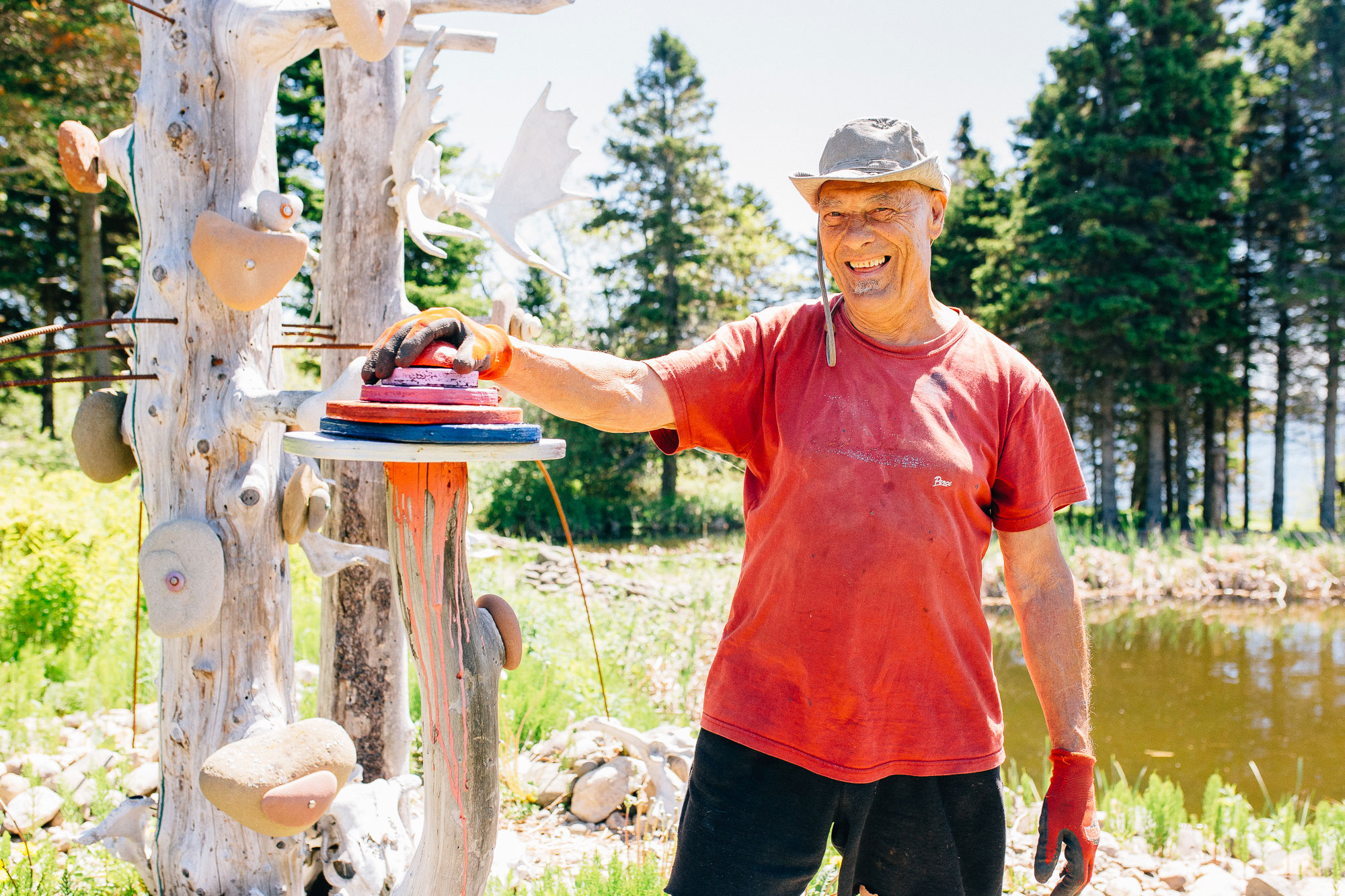
I know that it would be impossible to encapsulate Margot’s decades of experience and creation into a single photo essay, so I’m going to stop there. It was visually stunning, a small paradise on the coast north of Percé. I often think of art as a city-based culture. For Margot, however, it exists in wind and waves, colours and driftwood and in ideas yet to come.
